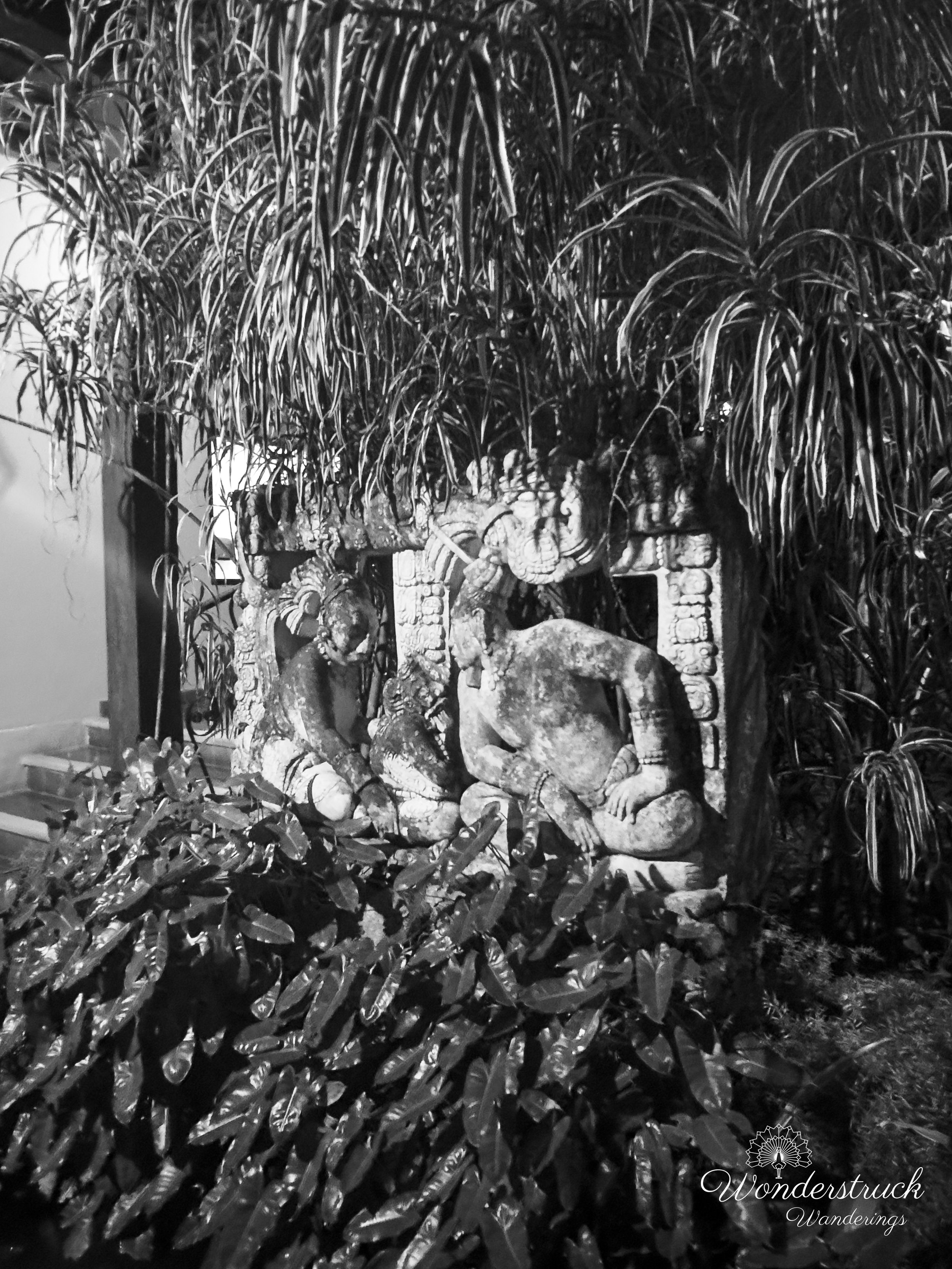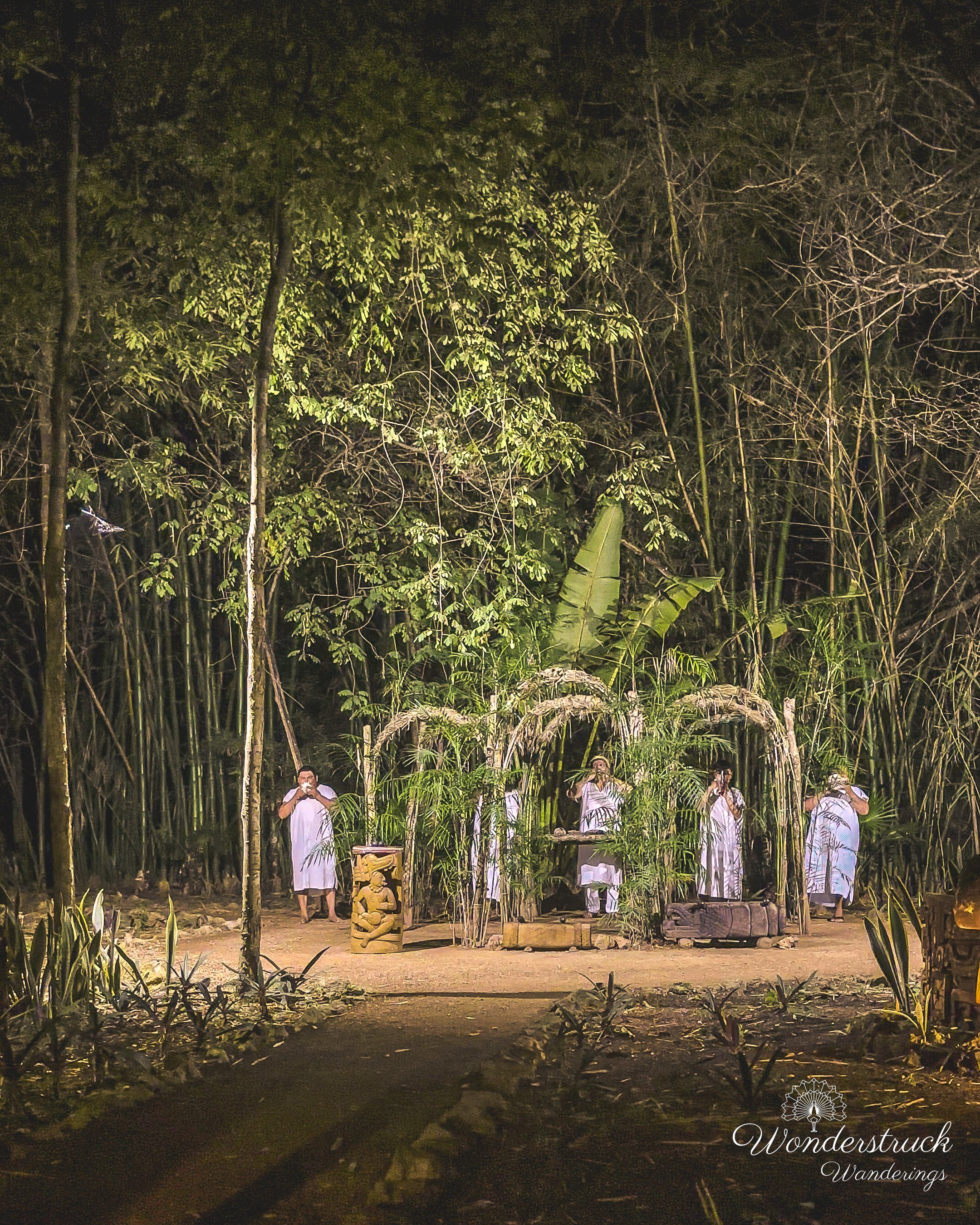Exploring Chichén Itzá and Uxmal (Day 3)
Early morning at the crack of dawn , we got ready and went out with your friendly guide provided by the lodge for a bird watching tour of the surrounding mayan reserve. We followed along and right next to the entryway heard the sweet “hoot hoot” of a pygmy owl. We watched it and took pictures of it for 20 mins and it was so close to us that we could see its throat puff up as it was hooting. After a while we went to look for other birds in the area and spotted an Aracari in the main courtyard chopping on some saw berries. We followed it around for 5-10 mins before moving on to some parakeets and other birds like the hooded warbler. When you are having fun time just passes by quickly and we had no idea when it was time to have breakfast before heading out to the Archaeological site.
We chose a mayan omelet and french toast with fruit juice and a side of sausage. It was great having a relaxing breakfast with all the birds chirping about. After breakfast we quickly drove to the parking lot of the archaeological site. We were there at 8:30 ( the flights open at 8:00) and there was already a traffic jam. Luckily we got a parking spot , 1 hour later and you have to park , 10 mins away and walk.
Once we reached the gate , there was already a long line for the ticket counter and the entrance. There is a stall right next to the ticket counter for getting a guide , and it's expensive around USD 50 to get one. But the good part is that you can pay for your ticket right there and this gives you access through the express lane, thus skipping the main line.
I've read that at Chichen Itza, they strictly enforce a policy allowing only one camera per person and prohibit the use of long lenses. They also charge extra fees for video cameras, similar to our experience at Ek Balam. Additionally, large camera bags and tripods are not allowed, as they consider them professional equipment. This regulation seems somewhat perplexing and unsupportive of hobbyist and casual photographers like us. However, despite its impracticality, we understood the importance of adhering to local laws and regulations. To mitigate any issues, we brought camera gear covers, fortunately realizing that landscape photography doesn't necessarily require bulky lenses.


Upon entering the site, we traversed a lengthy shaded walkway flanked by vendors eager to sell their wares. Fortunately, they didn't hassle us much once they noticed our guide. However, we soon discovered that the guide primarily offered historical insights and mythological explanations before allowing us to explore independently. While this approach provided flexibility, it left many questions unanswered about the numerous buildings beyond the main ones covered by the guide.

































During our visit, we delved into the intricacies of the Mayan civilization, particularly their calendars and architectural marvels. Notable revelations:
The main temple's design, with four sides and 91 steps each, cleverly corresponds to the solar year, totaling 365 steps when the platform is included.
Each side also features 9 terraces, representing the 18 months of the Haab calendar, augmented by an additional five-day period.
Remarkably, during equinoxes, the temple's alignment creates an illusion of Kukulkan, the serpent god, descending from the heavens, a spectacle drawing crowds.
Recent discoveries unveiled nested pyramids within the main structure, showcasing advanced construction techniques.
Situated atop a cenote, the temple held ceremonial significance, serving as a conduit to the Mayan underworld.
El Castillo's stairs possess an acoustic design that echoes the call of the sacred quetzal bird, a testament to Mayan architectural ingenuity.
Various structures, such as the platform of skulls and the ball court, reflect Toltec architectural influences from central Mexico.
The ball court, the largest in the Americas, likely hosted ritualistic games, with carvings depicting potential sacrifices or ceremonies.
Despite the destruction of many codices by conquistadors and priests, a few remnants survive in European museums, preserving glimpses of Mayan writings.
The Ceiba tree, revered by the Mayans, sustains a rich ecosystem and symbolizes the interconnectedness of earth and sky in Mayan cosmology, with its wood serving various purposes, including canoe crafting.
After the interesting discussion with our guide we went around our self guided architecture tour. The complex is huge and most of it is still getting excavated.








El Castillo is the most easily distinguishable landmark of the archeological site, with the park entrance and ball court to the west and the Thousand Columns Group and market to the east. You can visit these areas in any order you like. There are maps on-site that tell you the location of all the buildings.We spent around two more hours visiting all the locations and taking pictures.
We returned to our hotel, Hacienda Chichen, and enjoyed a leisurely lunch on the outdoor patio. Afterward, we explored the expansive property, wandering among the Old Hacienda ruins, well, and gardens, savoring the tranquil ambiance under the shade of towering trees.







The drive to the Uxmal site, passing through Merida, typically takes about 3 hours. Opting to bypass Merida to save time, we arrived at Uxmal around 3:40 pm. With only an hour or so of daylight left, we purchased tickets and decided to explore the ruins at our own pace, planning to hire a guide the following day. Our decision to visit in the late afternoon proved wise, despite the need to pay entry fees again the next day.
Uxmal stands out as one of the most ornate and beautiful Mayan ruins, surpassing even Chichen Itza in grandeur and craftsmanship. While Chichen Itza's fame stems from its mathematical precision and astronomical alignments, Uxmal captivates with its intricate detail and architectural splendor.















Ascending a staircase, we encountered the Chultun, a rainwater collection system crucial for Uxmal's survival in the absence of a nearby water source. Next, we marveled at the Pyramid of the Magician, known for its unique rounded edges, before entering the breathtaking Nunnery Quadrangle courtyard, adorned with intricate stone carvings of Mayan deities and symbols.












Descending to the Ball Court, a simpler version compared to Chichen Itza's grand spectacle, we proceeded southward, passing archaeological digs toward the House of the Governor and the Grand Pyramid. Climbing the platform of the Governor's Palace, we admired panoramic views of the site before realizing it was near closing time.













With minutes to spare, we retraced our steps, soaking in the last rays of sunlight as we bid farewell to Uxmal for the day. The fading light cast a mystical glow over the ancient ruins, leaving us with lasting impressions of its majestic beauty.
We opted to stay at the Mayaland Lodge at Uxmal, conveniently located across from the archaeological site's parking lot. After checking in, freshening up, and securing a dinner reservation for 7:45 pm, we decided to visit the Choco Museum, which stays open until 7:30 pm. The museum's striking Mayan blue entrance, set amidst lush greenery, caught our attention as we arrived.
Arriving late had its advantages; we found the exhibits nearly deserted, allowing us to explore the history of chocolate at our own pace. From its use as currency and offerings in Mayan rituals to its transformation into a sugary treat, the exhibits traced chocolate's evolution over time. We traversed short jungle trails between exhibits, encountering various cacao and native Yucatan trees. While we usually skip caged animal displays, we couldn't ignore the sight of a spider monkey grasping its enclosure.












Attending the Mayan chocolate ceremony at 6:50 pm provided a serene glimpse into Mayan spirituality, with offerings made to the rain god Chaac for a fruitful harvest. Following the ceremony, we sampled Chokoj Ha, a soothing chocolate beverage infused with spices like chili and cinnamon.
After perusing the European history of chocolate exhibits, we visited the gift store for souvenirs, chocolate, and coffee. Back at our hotel, we relaxed on the balcony before heading to dinner. While the food was satisfactory, it leaned more toward international fare than local cuisine.
With tickets booked for the night show, we aimed for the second performance, allowing time for our museum visit. Confusion arose regarding the start time, fluctuating between 8:45 pm and 9:00 pm due to sunset variations. Thankfully, we arrived just in time, although a low camera battery threatened our ability to capture night shots. Fortunately, the accommodating staff allowed us to retrieve a spare battery from our room, ensuring we didn't miss any of the illuminated spectacle.









The "Ecos de Uxmal" light show, though primarily in Spanish, offers a rich experience for those familiar with Mayan history and symbolism. It commences with a brief video projected onto the Pyramid of the Magician, then transitions to a Ceiba Tree, symbolizing the connection between the heavens and the underworld.
Visitors are guided through the House of Iguanas, a structure with 11 stone pillars, and the ball game court. While the Governor's Palace is visible from a distance, the tour proceeds to the Nunnery Quadrangle, where guests pass beneath a glowing red arch under the night sky.














Seated in the courtyard, the main show unfolds, recounting a Mayan legend of a Dwarf wizard king who constructed the pyramid in a single day. The story, narrated by the king's mother, a powerful sorceress, tells of trials he endured to claim kingship, including surviving three blows to the head. The tale emphasizes his commitment to fair governance, leading Uxmal to prosperity.
















The light show, relatively unchanged since the 1970s/80s, employs basic color projections on the ruins' walls. However, it effectively utilizes the artwork to narrate the story, despite the antiquated technology. Each night, crews set up and dismantle the equipment within the Nunnery Quadrangle.
Despite artistic liberties, "Ecos de Uxmal" offers a mesmerizing experience, enhanced by the starlit surroundings and captivating narrative. Legend has it that Queen Elizabeth II, during her 1975 visit to Mexico, enjoyed the show, and chants for rain from the Rain god Chaac resulted in a downpour.











After the show, we returned to our rooms, content from a day of exploration and adventure, drifting into a deep slumber.




